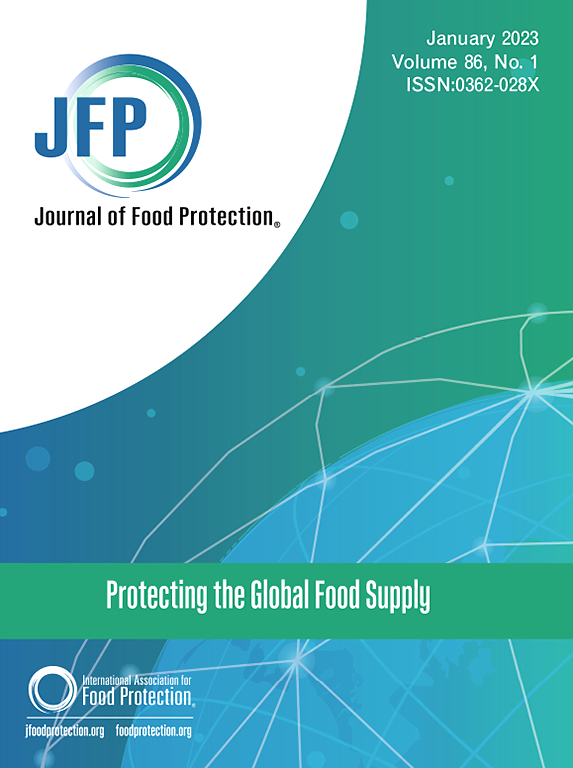The Effects of Sampling Sites, Collection Time, and Refrigerated Storage Duration on Microbiota of Raw Milk From a Chinese Dairy Farm: An Exploratory Study
IF 2.8
4区 农林科学
Q3 BIOTECHNOLOGY & APPLIED MICROBIOLOGY
引用次数: 0
Abstract
Raw milk is the primary material for all dairy products, making it imperative to characterize and monitor its microbial composition to ensure product quality. To investigate microbial contamination from pasture to processing facilities and establish microbial traceability systems, eighty-seven raw milk samples were collected from a dairy farm in Shijiazhuang of China in August. The raw milk samples were categorized into three experimental groups based on: sampling sites along the production chain (manual milking, buffer tank, filter, refrigeration tank, milk truck, and plant factory), sampling time (before dawn, morning, noon, and afternoon), and refrigeration storage (0–72 h at 12 h intervals). The microbiota were evaluated by 16S rRNA sequencing. The results identified Pseudomonas, Lactobacillus, and Prevotella as the predominant bacterial genera across all sampling conditions. The α-diversity (Shannon and Chao1) and β-diversity analysis jointly revealed significant differences in microbial communities of raw milk samples. Specifically, raw milk collected from milk truck showed distinct bacterial communities compared with upstream collecting points, while morning-collected samples showed marked compositional differences from other time points. These findings were consistently supported by cluster heatmap analysis. In addition, the relative abundance of Pseudomonas in raw milk decreased but Lactococcus and Serratia increased with refrigerated time (P < 0.05). This inverse relationship was further evidenced in cooccurrence network showing a strong negative correlation between Lactococcus, Serratia, and Pseudomonas. These results indicated where and when (after being transported to milk truck and in the morning) we need to alert owing to potential contamination in raw milk. Our results also suggested that psychrotrophic bacteria in raw milk should be paid attention, especially Pseudomonas during early refrigerated storage and Serratia during late refrigerated storage.
取样地点、采集时间和冷藏时间对中国某奶牛场原料奶微生物群影响的探索性研究
原料奶是所有乳制品的主要原料,因此必须对其微生物组成进行表征和监测,以确保产品质量。为了调查从牧场到加工设施的微生物污染情况,并建立微生物溯源系统,于8月在中国石家庄的一个奶牛场采集了87份原料奶样本。原料奶样品根据生产链上的采样地点(人工挤奶、缓冲罐、过滤器、冷藏罐、牛奶车和工厂)、采样时间(黎明前、上午、中午和下午)和冷藏储存(间隔12小时0-72小时)分为三个实验组。采用16S rRNA测序对菌群进行鉴定。结果确定假单胞菌,乳酸杆菌和普雷沃氏菌是所有采样条件下的优势细菌属。α-多样性(Shannon和Chao1)和β-多样性分析共同揭示了原料奶样品微生物群落的显著差异。其中,运奶车采集的原料奶与上游采集点相比,细菌群落差异明显,而上午采集的原料奶与其他时间点相比,成分差异明显。这些发现得到了聚类热图分析的一致支持。此外,随着冷藏时间的延长,原料奶中假单胞菌的相对丰度降低,而乳球菌和沙雷菌的相对丰度增加(P <;0.05)。这种负相关关系在共发生网络中进一步得到证实,乳球菌、沙雷菌和假单胞菌之间存在很强的负相关关系。这些结果表明,由于原料奶可能受到污染,我们需要在何时何地(在运输到牛奶卡车之后和早上)提高警惕。研究结果还提示,应注意原料奶中的冷养菌,尤其是冷藏初期的假单胞菌和冷藏后期的沙雷氏菌。
本文章由计算机程序翻译,如有差异,请以英文原文为准。
求助全文
约1分钟内获得全文
求助全文
来源期刊

Journal of food protection
工程技术-生物工程与应用微生物
CiteScore
4.20
自引率
5.00%
发文量
296
审稿时长
2.5 months
期刊介绍:
The Journal of Food Protection® (JFP) is an international, monthly scientific journal in the English language published by the International Association for Food Protection (IAFP). JFP publishes research and review articles on all aspects of food protection and safety. Major emphases of JFP are placed on studies dealing with:
Tracking, detecting (including traditional, molecular, and real-time), inactivating, and controlling food-related hazards, including microorganisms (including antibiotic resistance), microbial (mycotoxins, seafood toxins) and non-microbial toxins (heavy metals, pesticides, veterinary drug residues, migrants from food packaging, and processing contaminants), allergens and pests (insects, rodents) in human food, pet food and animal feed throughout the food chain;
Microbiological food quality and traditional/novel methods to assay microbiological food quality;
Prevention of food-related hazards and food spoilage through food preservatives and thermal/non-thermal processes, including process validation;
Food fermentations and food-related probiotics;
Safe food handling practices during pre-harvest, harvest, post-harvest, distribution and consumption, including food safety education for retailers, foodservice, and consumers;
Risk assessments for food-related hazards;
Economic impact of food-related hazards, foodborne illness, food loss, food spoilage, and adulterated foods;
Food fraud, food authentication, food defense, and foodborne disease outbreak investigations.
 求助内容:
求助内容: 应助结果提醒方式:
应助结果提醒方式:


